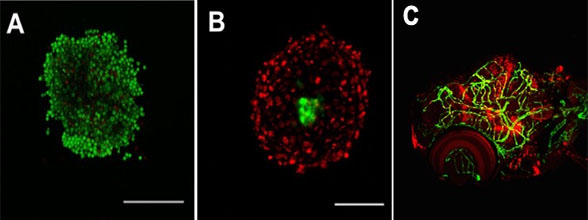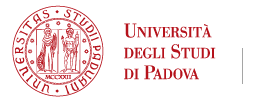
SPOTLIGHT: Cell Biology and Developmental Genetics Unit
Pubblicato il: 15.11.2019 08:24
One of the main leitmotivs of the Cell Biology and Developmental Genetics Unit, coordinated by Prof. Francesco Argenton, is the use of miniaturized systems to address a range of biological challenges, from disease modeling to drug discovery, focusing on both inherited and non-communicable diseases. At present, this Research Unit is applying a set of small-size systems, including the unicellular yeast (S. cerevisiae), the invertebrate worm (C. elegans), the vertebrate zebrafish (D. rerio), the mouse (M. musculus), in vitro monodimensional and tridimensional cultures (spheroids, mammospheres), and organoid-based assays to model a selection of pathological and physiological conditions. This approach, based on multiple systems, allows a quick, simplified, robust and comparative analysis of complex mechanisms underlying relevant diseases such as inherited cardiac and metabolic diseases, endocrine disorders as well as tumors (melanoma, breast and colorectal cancers are only some examples). The use of miniaturized models such as yeast, worm, zebrafish, cell cultures and organoids may reduce research costs, speed up large-scale drug screens and adopt low complexity systems, before translating the final results to mammalian organisms, in this way respecting the 3Rs concept in animal testing.
The Research Unit takes advantage of the most modern techniques of genome editing (Crispr/Cas9), single cell sequencing and drug discovery/delivery (based on small molecule libraries, bacteria-derived immune modulatory peptides and injectable nanoparticles). The Research Unit is also a worldwide leader in the production of transgenic zebrafish lines for the study of signaling pathway activation in vivo. These living biosensors allow a real-time and non-invasive analysis of cellular communications, visualized as multi-color fluorescent signals emitted in a whole, intact, small-size vertebrate organism.
The Cell Biology and Developmental Genetics Unit currently includes:
Staff members: Francesco Argenton, Giorgia Beffagna, Gaia Codolo, Luisa Dalla Valle, Marina De Bernard, Paola Ferraro, Maddalena Mognato, Francesca Moret, Chiara Rampazzo, Elena Reddi, Natascia Tiso.
Postdoc and PhD students: Greta Avancini, Ambra Bertocco, Rudy Celeghin, Sara Coletta, Giulia D’Aronco, Alberto Dinarello, Camilla Fontana, Giorgio Licciardello, Giacomo Meneghetti, Giovanni Risato, Gemma Soler Teixidor.
*Figure legend: A) Untreated and viable HeLa cell spheroid stained with Live/Dead kit; B) spheroid exposed to mTHPC-liposomes and red light (photodynamic therapy treatment). After the treatment the majority of cells are dead (red), except than in the spheroid core (live cells, green). Bars: 100 µm. Images from Gaio et al., JPPB, 2016, 161:244-252; C) Fluorescent head of a zebrafish embryo (eye and brain in lateral view, anterior to the left) showing GFP-expressing blood vessels in green and mCherry-expressing Wnt signaling-responsive cells in red.





